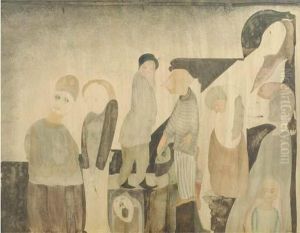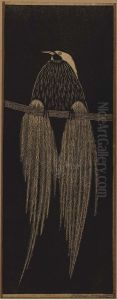Samuel Jessurun De Mesquita Paintings
Samuel Jessurun de Mesquita was a Dutch graphic artist, born on June 6, 1868, in Amsterdam, Netherlands. He belonged to a Sephardic Jewish family with Portuguese roots, which influenced not only his cultural background but also his artistic themes and motifs. De Mesquita is known for his distinctive style in etchings, woodcuts, and drawings, which often featured exotic animals, fantastical landscapes, and intricate patterns that reflect his interest in Art Nouveau and later, Art Deco movements.
De Mesquita's education in art began at the Rijksakademie van beeldende kunsten (State Academy of Fine Arts) in Amsterdam, where he developed his skills and evolved his unique artistic voice. His work was not widely recognized during his lifetime, partially due to his reclusive nature and preference for working in solitude. However, his artistic output was prolific, and he experimented with various techniques, especially in the realm of printmaking.
A significant aspect of De Mesquita's life and work is his connection with Dutch artist M.C. Escher, whom he taught at the School for Architecture and Decorative Arts in Haarlem. This mentorship began in the early 1910s and profoundly influenced Escher's later works. De Mesquita introduced Escher to graphic techniques and encouraged his exploration of the peculiar and the unconventional, which would become hallmarks of Escher's celebrated optical illusions and impossible constructions.
Despite his talents and contributions to the arts, Samuel Jessurun de Mesquita faced tragic circumstances toward the end of his life. During World War II, the Nazi occupation of the Netherlands led to the persecution of the Jewish population. De Mesquita, along with his wife and son, was arrested and deported to Auschwitz concentration camp, where he was murdered on February 11, 1944. Much of his work was lost or destroyed during the war, but efforts have been made posthumously to recover and exhibit his surviving pieces, thereby acknowledging his place in the history of Dutch art.
Today, Samuel Jessurun de Mesquita is remembered not only for his unique artistic contributions but also as a symbol of the cultural losses inflicted by the Holocaust. His surviving works, which include intricate etchings, woodcuts, and drawings, continue to be studied and appreciated for their originality and the insight they offer into the early 20th-century avant-garde art movements in the Netherlands.










